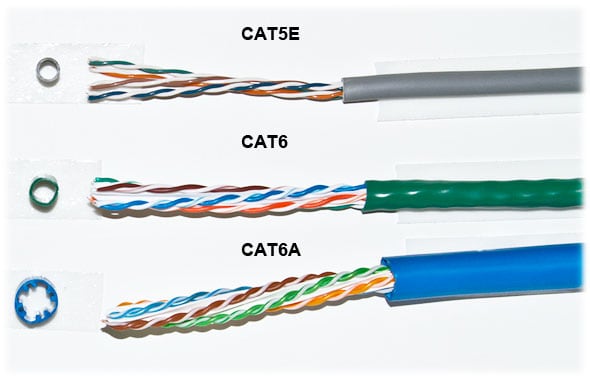Even though there are solutions like “Google Fiber” that offer direct optical signal from Internet provider directly to the customer, it is more of the exception than a rule. Most of modern solutions still use copper as media for the “last mile”. Usually, when referring to a copper in modern network, it is either Category 5e, 6, or 6A UTP cable.
Every cable is manufactured with a specific purpose in mind, which it should be used for in the future. It does not 100% mean that copper cable for digital telephone will fail when used for audio transmission. In fact, it most likely will work. However if compare it with the cable that was created for this purpose, the latter one would get much better performance/price ratio.
Category 5e is most common type of cable up to date. It comes either in shielded or non-shielded version (we have already talked about how shielding helps against EMI and noise here). 5e UTP is able to work with bandwidth of up to 100 MHz.
It supports following applications:
- Digital phone systems
- 10Base-T
- 100Base-TX
- 1000Base-T
- TP-PMD (FDDI over copper)
- ATM (155 Mbps)

Category 6 cable support higher bandwidth – up to 350 MHz, while being able to work with any application its predecessor was able to work with. It has better support for 1000Base-T than 5e UTP. Physical changes include separated pair shielding that helps lowering crosstalk interference. There are two shielded versions of this cable:
- Category 6 ScTP – with traditional shielding;
- Category 6 STP – with additional shielding for each separate pair of wires..
Category 6A cable provides better performance and support of bandwidth of up to 500 MHz. It is designed for the purpose of 10 Gigabit Ethernet. In order to successfully work with such high bandwidth, cable meets AXT (Alien Crosstalk) requirements.
Good solution to send high speed Ethernet data over twisted pairs are our High Speed LAN extenders:



